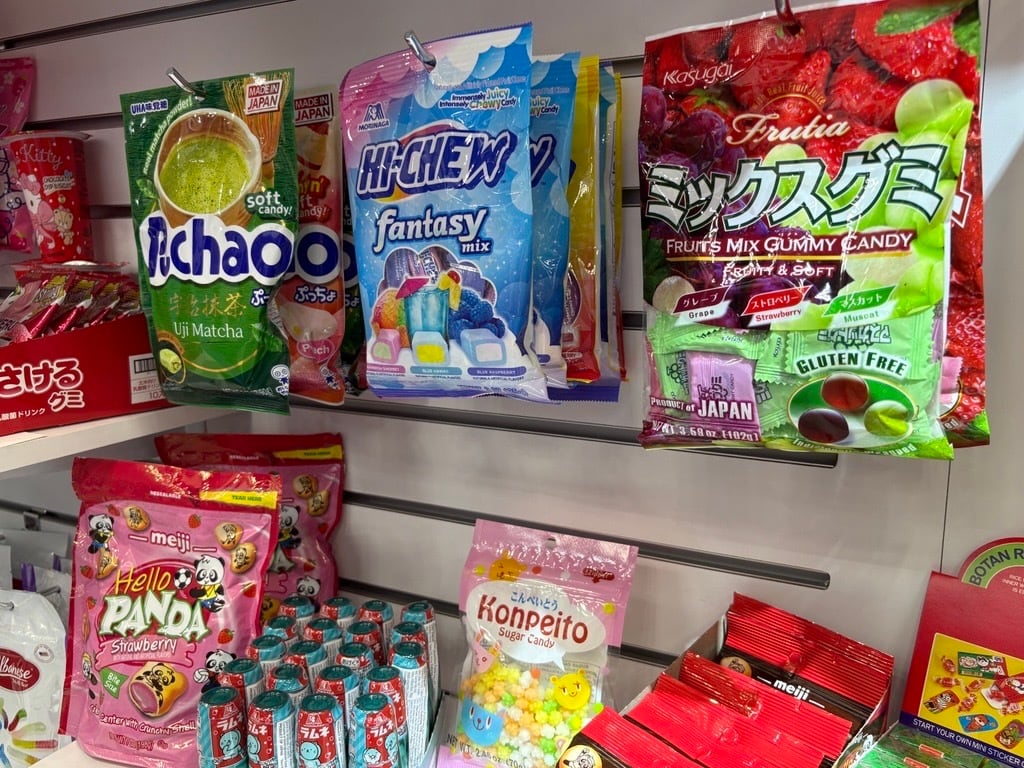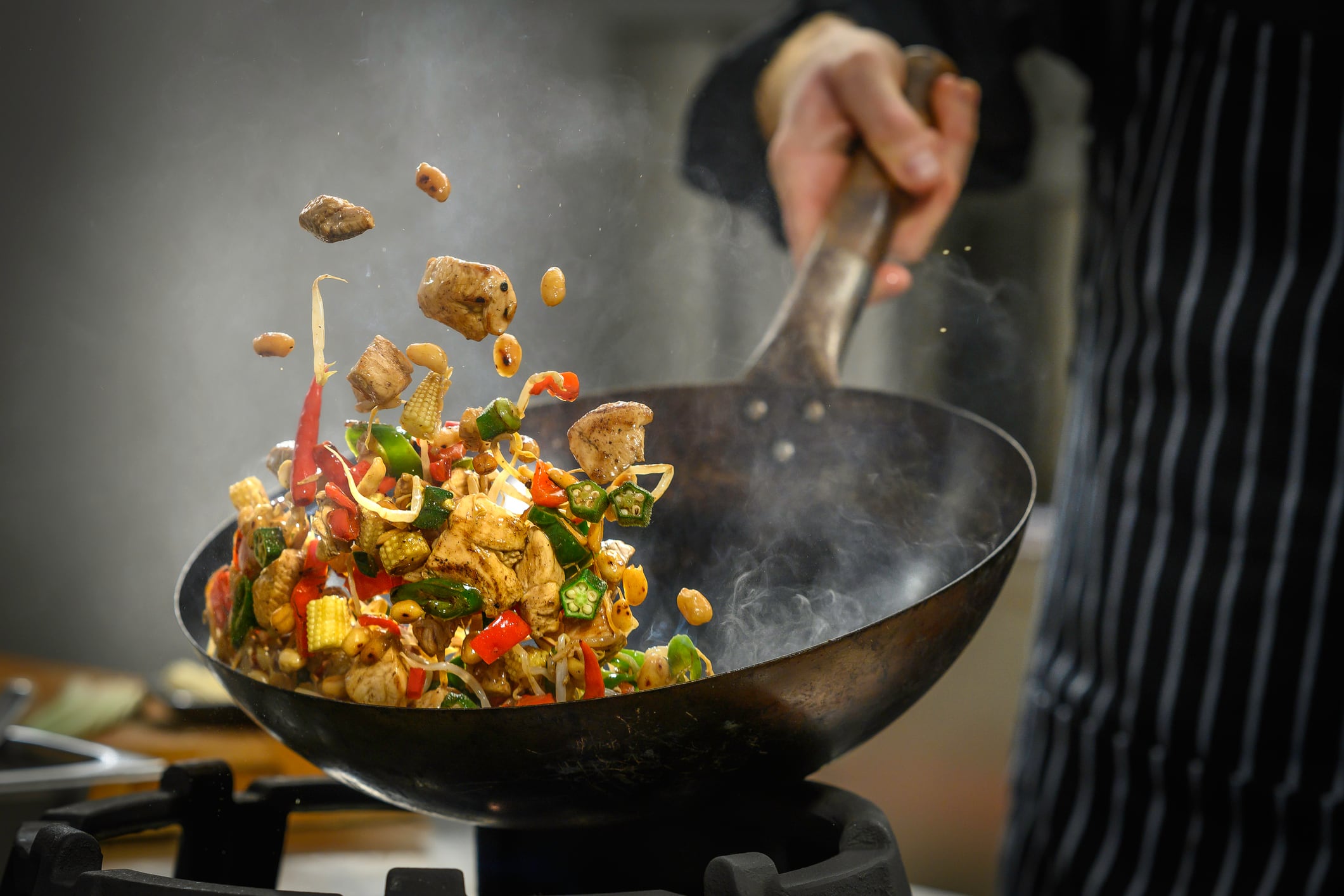Indie grocers are leaning into culturally diverse offerings, indulgent usage occasions and flexible sourcing strategies to compete in a challenging economic environment, according to the National Grocers Association.
“What we’re seeing trend wise in the independent supermarket industry, and as far as sweets and snack goes, is there’s really a pivot towards health and wellness,” Laura Strange, senior vice president of communications and external affairs at NGA, said during the Sweets & Snacks Expo earlier this spring.
These trends include the ever-growing high protein space and vegan-based snacks that are “a little better off for you,” Strange added.
Flavor to the front
Flavor exploration also is on the rise, bringing consumers novelty and excitement in their snacking experience, Strange explained. Brands like Hi-Chew featured Rainbow Sherbet, Blue Hawaii and Blue Raspberry as part of its Fantasy Mix or Cretor’s Kettle Corn with Tajin exemplified this trend at the show.
“What we’re also seeing is a growth in the ethnic and international snacks as well, particularly among younger demographics. They’re being exposed really through the internet, so they’re starting to latch on to these different flavors,” she said.
Cedar Valley’s pits chips in Mediterranean Za’atar, Bavarian Meats’ smoked meat snacks in savory and spicy flavors and Tropical Fields’ dried mango with plum seasoning were some brands that offered familiar formats in globally-inspired flavors.
Private label sweets and snacks grow
Private label, which continues to grow in grocery, also is gaining traction in the snack and confection category, Strange noted.
“As people are more price aware, consumers are really kind of looking at protecting their budget, what we’re seeing is private labels really starting to take off, particularly in the snacks and the sweets,” she said.
For context, beverages and general food sales, which increased 4.8% and 2.5%, respectively, were among the top growth areas across all private label dollar sales in the six months ending June 15, according to recent data from the Private Label Manufacturers Association (PLMA). With a 2024 record of $271 billion, PLMA projects total store brand sales for 2025 to reach $277 billion.
Better-for-you is nuanced
The “better-for-you” boom means different things to different communities, but Strange noted that indie grocers are uniquely positioned to cater to these nuanced demands – especially since the pandemic.
“Coming out of COVID, people really started to focus on their health, their mental health. They started to take a look at the products out there that were the better-for-you products. So, it might vary regionally in community to community, but people are starting to be more attuned into that,” she explained.
Strange sees NGA’s members identifying major trends like high protein snacks and consumer preference for brands that prioritize transparency and clean label as major drivers in the indie grocer segment.
Younger generations are driving interest in clean-label options, explained David Cutler, VP, media relations and public affairs at NGA.
“On the health and wellness side, I really think it’s just a more conscious consumer trying to have that kind of clean living” and “eating organic and eating clean, having really simple labels, really simple ingredients,” especially for younger generations, he said.
Cutler attributed the growth in clean label to Millennials and Gen Z, who have their own families and are “more aware of what goes into their body and the bodies of their kids.” Yet, snacking is not without the fun and indulgence – candy and sugar still serve as a sweet moment for consumers to enjoy within their healthy lifestyles, he added.
The power of in-store experiences and local distribution strategies for indie grocers
In-store activations and sampling are regaining momentum as grocers try to reconnect with shoppers through education and experience.
“Activations are tremendously important, as is the experience to bringing people into the store,” Strange said. “There’s an element placed on education, just connecting with consumers and letting them know about the food that they’re buying and how they can either prepare it, or why it’s beneficial for them, or even just areas where they can indulge.”
When it comes to distribution and competitive sourcing, Strange and Cutler emphasized the advantage of local, nimble strategies.
“What really sets independent grocers apart is that they’re able to take a challenge and kind of turn it on its head,” Strange said.
“Our members, our stores, independents, are really able to be very nimble in how they’re able to source their products, ... and also differentiate themselves from their competitors,” she said.
For example, for emerging brands or smaller companies, independent grocers may be a better fit compared to big box retailers that “might not want to take a chance,” on those brands, she added.
Indie grocers’ proximity to their communities allows them to source locally, Cutler echoed.
“When they find challenges through their sourcing supply chains or where they are sourcing, they can pivot very quickly and they can source locally,” Cutler explained.




